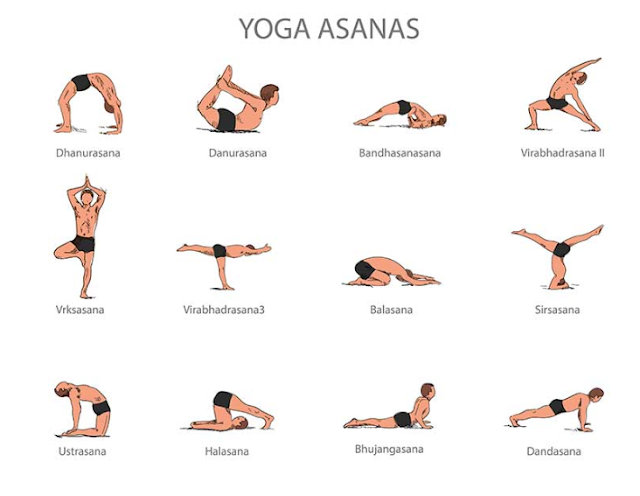The Transformative Power of Yoga: A Holistic Approach to Well-being
Yoga, an ancient practice originating in India over 5,000 years ago, has transcended time and culture to become a global phenomenon. Rooted in the Sanskrit word "yuj," meaning to unite or join, yoga is more than just physical exercise—it is a holistic system that integrates the mind, body, and spirit. Today, yoga is celebrated for its ability to promote physical health, mental clarity, emotional balance, and spiritual growth. This article explores the various categories of yoga, its benefits, and how it can transform lives.
Categories of Yoga
Yoga encompasses a wide range of practices, each with its unique focus and approach. Here are some of the most popular types:
Hatha Yoga
Hatha is the foundation of all yoga styles. It emphasizes physical postures (asanas) and breathing techniques (pranayama) to align and calm the body, mind, and spirit. It is ideal for beginners due to its slow and gentle pace.
Vinyasa Yoga
Known as "flow yoga," Vinyasa synchronizes movement with breath, creating a dynamic and fluid practice. It is great for building strength, flexibility, and cardiovascular health.
Ashtanga Yoga
Ashtanga is a rigorous and structured style that follows a specific sequence of postures. It is physically demanding and focuses on building discipline, endurance, and focus.
Iyengar Yoga
This style emphasizes precision and alignment in postures. Props like blocks, straps, and bolsters are often used to help practitioners achieve correct form. It is particularly beneficial for those recovering from injuries.
Kundalini Yoga
Kundalini combines postures, breathwork, chanting, and meditation to awaken the dormant energy at the base of the spine. It is a deeply spiritual practice aimed at achieving higher consciousness.
Yin Yoga
Yin yoga targets the deep connective tissues of the body through long-held, passive poses. It is a meditative practice that promotes relaxation and flexibility.
Restorative Yoga
This gentle practice uses props to support the body in restful poses, allowing for deep relaxation and stress relief. It is perfect for those seeking to unwind and rejuvenate.
Bikram Yoga
Also known as hot yoga, Bikram consists of a series of 26 postures practiced in a heated room. The heat helps to detoxify the body and improve flexibility.
Physical Benefits of Yoga
Yoga offers a multitude of physical benefits, making it a popular choice for people of all ages and fitness levels. Some of the key advantages include:
Improved Flexibility: Regular practice stretches and lengthens muscles, enhancing overall flexibility.
Increased Strength: Many yoga poses require you to support your body weight, building muscle strength.
Better Posture: Yoga promotes alignment and awareness, helping to correct poor posture.
Enhanced Balance: Balancing poses improve stability and coordination.
Pain Relief: Yoga can alleviate chronic pain, particularly in the back, neck, and joints.
Boosted Immunity: The practice stimulates the lymphatic system, aiding in detoxification and immune function.
Mental and Emotional Benefits
Beyond the physical, yoga is a powerful tool for mental and emotional well-being. It helps to:
Reduce Stress: Breathing techniques and meditation calm the nervous system, lowering stress levels.
Improve Focus: Yoga encourages mindfulness, enhancing concentration and mental clarity.
Promote Emotional Balance: The practice fosters self-awareness and emotional resilience.
Combat Anxiety and Depression: Yoga has been shown to reduce symptoms of anxiety and depression by promoting relaxation and positive thinking.
Enhance Sleep Quality: Regular practice can improve sleep patterns and combat insomnia.
Spiritual Benefits
For many, yoga is a spiritual journey that goes beyond the physical and mental realms. It offers:
Inner Peace: Meditation and mindfulness practices help cultivate a sense of inner calm.
Self-Discovery: Yoga encourages introspection, leading to greater self-awareness and personal growth.
Connection to the Universe: Many practitioners experience a sense of unity with the world around them, fostering compassion and empathy.
Yoga for Everyone
One of the most beautiful aspects of yoga is its inclusivity. Regardless of age, fitness level, or background, anyone can practice yoga. Modifications and props make it accessible to people with physical limitations, while its adaptability allows practitioners to tailor their practice to their individual needs.
Getting Started with Yoga
If you're new to yoga, here are some tips to begin your journey:
Choose the Right Style: Start with a beginner-friendly style like Hatha or Yin yoga.
Find a Qualified Instructor: A good teacher can guide you safely and effectively.
Invest in Basic Gear: A yoga mat, comfortable clothing, and props like blocks or straps can enhance your practice.
Practice Consistently: Even a few minutes a day can make a difference.
Listen to Your Body: Honor your limits and avoid pushing yourself too hard.
Conclusion
Yoga is more than a workout—it is a way of life. By integrating physical postures, breathwork, and mindfulness, yoga offers a comprehensive approach to well-being. Whether you seek physical fitness, mental clarity, emotional balance, or spiritual growth, yoga has something to offer. As the ancient sage Patanjali once said, "Yoga is the journey of the self, through the self, to the self." Embrace this transformative practice and discover the profound impact it can have on your life.



0 Comments